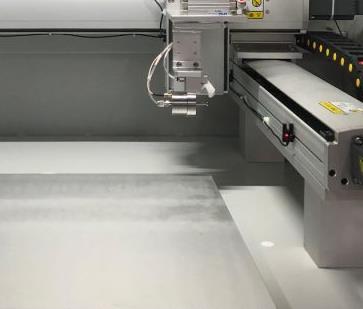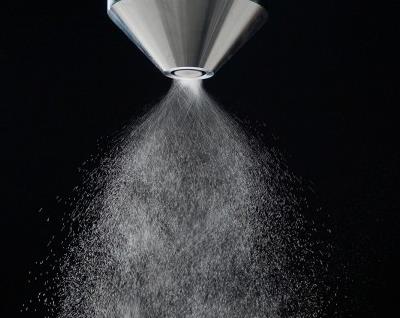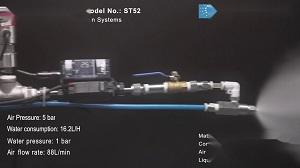Do you know ultrasonic atomizing spraying?
It's a technique that uses ultrasonic vibrations to turn a liquid into small droplets that are then sprayed onto something else. ultrasonic atomizing spraying can be used to do many useful things, such as making new materials, changing the properties of surfaces, or doing some medical treatments.
Some properties of the liquid can affect its effect, such as viscosity, density, surface tension, air flow, and so on. This article will talk to you about how liquid viscosity affects ultrasonic atomizing spray and how to solve these problems.
Influencing factors of ultrasonic atomizing spraying
The viscosity of a liquid is how much friction there is between the molecules in the liquid, or how hard it is for the liquid to flow. In general, the higher the viscosity of the liquid, the more difficult it is to flow, and the more difficult it is to spray the ultrasonic atomizing spray. Viscosity will affect the following aspects of ultrasonic spray.Effect of liquid viscosity on atomization
Viscosity affects the propagation and focus of ultrasonic waves in the liquid. A liquid with high viscosity will make the ultrasonic wave disappear quickly in the liquid, or spread out, so that the ultrasonic wave is not strong enough and not concentrated enough on the surface of the liquid. Therefore, if a liquid with high viscosity wants to atomize, it needs greater ultrasonic power and lower ultrasonic frequency.
The viscosity will affect the formation and distribution of atomized water droplets. The water column or water film formed by the liquid with high viscosity under ultrasonic vibration is not easy to break into small water droplets. Therefore, liquids with high viscosity usually produce relatively large and uneven atomized water droplets. Moreover, the high viscosity of the liquid will also make it easier for the atomized water droplets to stick together, so that the water droplets are distributed more unevenly.
Viscosity will affect the spraying process and effect. Droplets of atomized water produced by liquids with high viscosity do not fly easily and are prone to bumping into other things or falling down. Therefore, liquids with high viscosity usually reduce the spraying efficiency and narrow the spraying range. Moreover, the high viscosity of the liquid will also affect how the spray layer looks and works, such as thickness, flatness, porosity, adhesion, etc.
Improve the atomization effect of high viscosity liquids
To improve the ultrasonic atomization spraying effect of high viscosity liquids, you can try the following methods:Change the liquid temperature.
Temperature is an important factor affecting the viscosity of the liquid, in general, the higher the temperature, the lower the viscosity. Therefore, by heating or preheating the liquid can effectively reduce its viscosity, thereby improving its fluidity and ultrasonic atomization spraying performance.

Increase ultrasonic power and reduce operating frequency. Ultrasonic power and operating frequency is an important factor affecting ultrasonic atomization spraying, in general, the greater the power, the lower the frequency, the better the atomization effect. Therefore, by increasing the ultrasonic power and reducing the operating frequency, the ultrasonic excitation and crushing of the liquid with high viscosity can be effectively increased, so as to improve its atomization efficiency and uniformity.
Double or multi-flow ultrasonic atomizer is used. Double-flow or multi-flow ultrasonic atomizer refers to the atomizer which mixes the air flow and liquid flow at the exit of the ultrasonic atomizer and then atomizes. The advantage of this atomizer is that it can use the force and turbulence of the air stream to make it easier for the stream to break into small droplets. Therefore, the ultrasonic atomization spraying effect of high viscosity liquid can be effectively improved by using double-flow or multi-flow ultrasonic atomizer.


